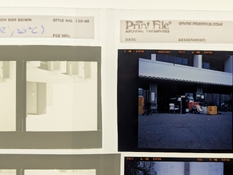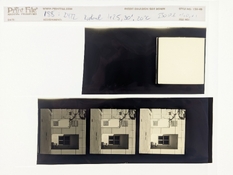gezak22
Subscriber
Howdy folks,
A very casual inspection suggests that the film speed may have been ISO 0.4, and I am intrigued enough to do a more thorough density curve for my process. Before I do, I wanted to check a detail. On the left is 2422 (developed by me) while on the right is some Velvia 50 developed by a lab, and I see a huge difference in the opacity of the unexposed area. Is this inherent of B/W transparency or is this caused by my process*?
My process
Is it possible that the fixer or the Isopropanol are reducing the opacity of the unexposed areas?
A very casual inspection suggests that the film speed may have been ISO 0.4, and I am intrigued enough to do a more thorough density curve for my process. Before I do, I wanted to check a detail. On the left is 2422 (developed by me) while on the right is some Velvia 50 developed by a lab, and I see a huge difference in the opacity of the unexposed area. Is this inherent of B/W transparency or is this caused by my process*?
My process
Code:
No prewash
Develop:
Rodinal + tap water: 12 mL + 900 mL. Rotary, 12 minutes, 20 C
Stop:
Ilfostop + tap water: 30 mL + 570 mL. Invert by hand 15x
Fix:
Ilford Rapid fixer + tap water: 120 mL + 480 mL. Rotary, 8 minutes, 20 C
Rinse:
Fill with tap water, dump
Fill with tap water, invert 5x, dump
Fill with tap water, invert 10x, dump
Fill with tap water, invert 20x, dump
Fill with tap water + 40 mL Isopropanol. Rotary, 10 minutes
Final rinse:
De-ionized water + Isopropanol + Edwal LFN: 1 L + 40 mL + 5 drops. Gentle agitation for 30 seconds, then rest for ~2 minutes
Hang to dryIs it possible that the fixer or the Isopropanol are reducing the opacity of the unexposed areas?







